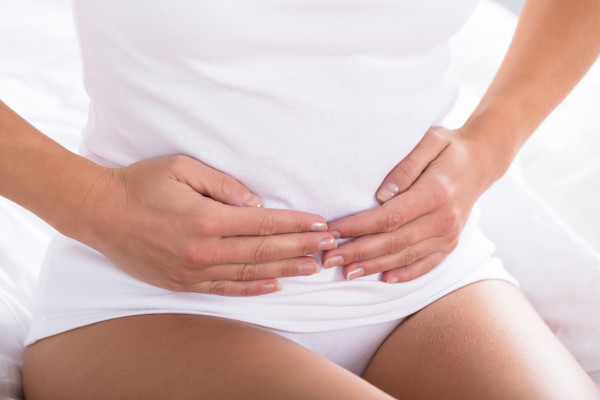Overactive bladder (OAB) is a common medical condition affecting women across Ireland, with one-quarter of Irish women aged 40-70 affected by OAB symptoms at some point in their life, according to new research*. MummyPages got in touch with Professor Barry O’Reilly, obstetrician and gynaecologist at Cork University Hospital in Ireland, who described the condition that affects up to 350,000 people in Ireland – many who worry about stigma, embarrassment and social anxiety because of it. Here, he explains more about the condition, the treatment options available and how making various lifestyle changes can help.
According to O'Reilly, it's women with OAB specifically who don’t always seek medical help or advice. This is unsurprising. Following the results of a UK survey conducted at the beginning of the year, which showed that more and more women are avoiding things like smear tests and general check-ups as a result of embarrassment, the same belief holds true when we speak of issues with our bladders. Women are embarrassed to go and get treatment for OAB; they believe that there is no help available, or they feel the condition is simply a natural consequence of ageing. It's definitely neither.
OAB can have a huge effect on a woman's quality of life. Over 60% of OAB sufferers have had their personal relationships or sex life impacted by their bladder symptoms and nearly 70% say that their social lives have been impacted by their bladder. **
So, what is OAB?
Anyone with OAB will have a bladder that is more active than usual - instead of staying at rest as urine fills the bladder, the muscle contracts frequently and spontaneously. Common symptoms of the condition include:
- Sudden and sometimes overwhelming urges to go to the toilet
- Needing to go to the toilet more than eight times in 24hrs
- Leakages due to not getting to the toilet on time
OAB is different to stress urinary incontinence, which is caused by weakened pelvic floor muscles and results in leakage through things like coughing, sneezing, laughing or exercise. The process of childbirth can weaken pelvic floor muscles in many women and increase their likelihood of developing some degree of stress incontinence.
Treatment
Women and mums shouldn’t have to suffer in silence with bladder control problems. There are plenty of ways to help alleviate the problem and manage symptoms for a better quality of life. In addition to visiting your doctor if you are concerned about bladder control problem, my top tips for managing incontinence include:
Lifestyle changes can help:
Fluid intake:
You should aim to drink about 6-8 glasses of fluid (about 2 litres) a day if possible. Rather than trying to limit the amount of fluid you drink, be more aware of what fluids you are consuming. For example, caffeine stimulates the bladder - so drinks like tea, coffee and energy drinks should be avoided as much as possible if you suffer with incontinence - and remember, tea can contain as much caffeine as coffee! Alcohol also acts as a bladder stimulant so should be moderated.
Stop smoking:
Nicotine can irritate the bladder muscle, causing bladder contraction and urgency.
Diet and exercise:
Artificial sweeteners and certain acidic foods can increase the urge to urinate in some people. Being overweight can also put extra pressure on the bladder, possibly increasing the symptoms of OAB. Incorporating healthier foods and less artificial sweeteners into your diet should assist with weight loss and regulating your bowel movements - both of which can reduce OAB symptoms.
Daily exercises:
As well as lifestyle changes, there are various exercises that can be incorporated into your daily routine that can help to alleviate OAB symptoms. As well as at-home exercises, to discuss OAB and how to treat symptoms always visit your GP.
Bladder Retraining:
The aim of this exercise is to increase the length of time between your trips to the toilet. This involves changing your daily schedule of toileting over a period of weeks and months so that you are slowly building up the time between visits. For example, if you are going to the toilet every 2 hours, try increasing the time of your next trip by 15 minutes and so on.
Pelvic Floor Exercises:
Many people have heard of pelvic floor exercises but did you know that approximately 50% of women squeeze their pelvic floor muscles incorrectly?
Pelvic floor exercises can help to reduce urge and frequency of OAB, and working on strengthening your pelvic floor muscle can positively affect bladder control.
The pelvic floor muscle works on the reflexes at the neck of the bladder. In sustaining the squeeze of these muscles, it may allow the bladder muscle to relax and enable further filling. These exercises involve repeated contractions of the pelvic floor muscles to build strength. This can be learned over time even if difficult and ineffective at first.
How exactly do I squeeze?
- Lie down or sit down
- Make sure the stomach is soft and relax and the spine is in the non-flexed / non- extended but rather - neutral position
- Breathe in and then all the way out
- Then slowly and gently draw in the back passage all the way up and forwards towards the front to the bladder - squeezing
- Don't brace the stomach, don't lift the chest and don't squeeze the buttocks
- Hold this for 5 seconds without changing your breathing
- Then let it go completely
- Think of a lift: you started on the ground floor, lift all the way to the 6th floor and now drop all the way to the basement. Make sure it is the basement.
Try do this 10 times, 3 times per day. When you can do this, then try and hold the squeeze and breathe for 10 seconds. Repeat 10 times. If you are unsure of whether you are completing pelvic floor exercises correctly, visit a Chartered Physiotherapist who can advise you.
Prof. Barry O’Reilly is involved with a new educational initiative called #InControl, working to empower those with OAB to stop ‘coping’ and seek help and support.
*Astellas / Accuracy OAB General Public Survey conducted in June 2017 among 301 women aged 40-70
**Astellas Understanding the OAB patient journey – Ireland country report December 2017







